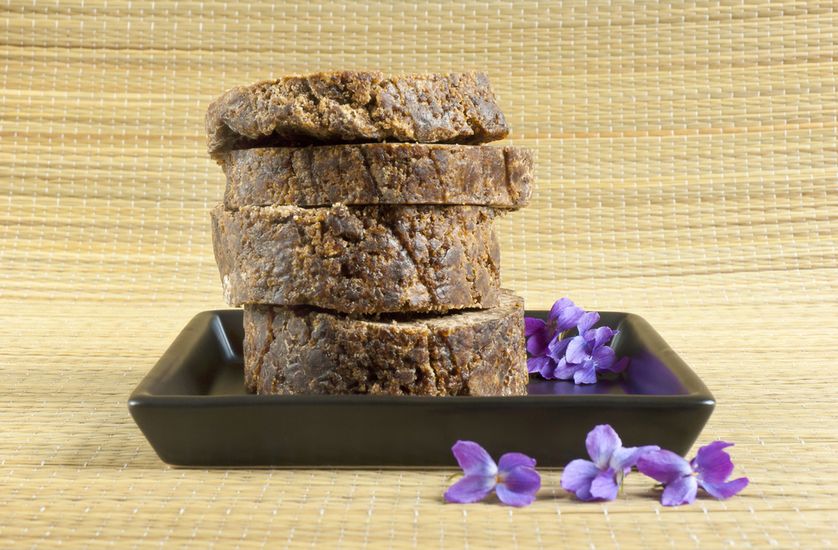Made from locally harvested plants and barks, this gentle cleanser leaves skin soft, smooth.
On the same day I received an assignment to write about African black soap, I serendipitously received a sample in the mail in a cache of beauty items I subscribe to monthly.
The soap claimed to be microdermabrasion in a bottle. But was that just a cheeky catchphrase, and what the heck would African black soap do for me?
Seems black soap or African black soap — also called anago soap, alata samina or ose dudu — has long been used for healing problem skin. It’s a cleanser used to lightly exfoliate and give skin a healthy glow, but there are also claims that it can thin fine lines, even out dark spots, and razor bumps and blemishes.
The soap is supposed to be useful for those with oily skin, dry skin, rashes, scalp irritations and sensitive skin. But is that possible?
Pouring out a dollop of soap from my sample bottle seemed like pouring out a gob of oozing molasses. The texture is somewhat goopy, thickish and slippery, as if the gob could slide right off your hand if you weren’t careful. There was almost no scent and the color was blackish-brown. (In fact, a small spatter dropped on the bathroom counter, leaving a brown mark until wiped away, so you’ll want to be careful not to spill the soap on something delicate, lest it stain.)
How black soap is made
Black soap is generally made from locally harvested African plants such as plantain, cocoa pods, palm tree leaves and shea tree bark. The ingredients are sun-dried and roasted, which is how it gets its deep color. Water and oils such as coconut, palm and shea butter are then added. The soap is then left to sit and “cure.”
Traditionally made in West Africa by tribeswomen in Ghana from special secret recipes, it is often fairly traded. These soaps are more likely to be pure, whereas commercial soaps made in the U.S. may include additional artificial ingredients.
When I cleansed my face with the black soap, the deep color mixed with water made a brown, creamy lather that felt cleansing and smooth. There was no redness or tingling while using the soap, yet afterward my face did feel exfoliated into a warm glow.

African black soap absorbs water easily, so it should be stored in a plastic bag or dry place.
In bar form, black soap is a little crumbly and softer than most soap and may look like food to a child or pet, so be careful to store it properly. It’s also typically a shade of brown, instead of black. It has a high glycerin content and absorbs water easily, so it should be stored in a plastic bag or dry area away from the tub and shower.
Because black soap formulations vary, users may have different results such as overdrying or tingling. If you experience any unpleasant effects, use soap less often or less soap at each cleansing. A marble-sized ball is plenty to wash the face.
Tips on using black soap
When using raw bar soap, work it up in your hands to make sure there are no whole particles of tree bark or pods in the bar that can scratch or tear skin. Apply the lather to your face with fingertips and gently rub it in. Wash and rinse with cool water to help reduce stinging and redness.
To avoid or reduce any unpleasant effects, do not leave the soap on your face for a long period of time.
Black soap is suited for any skin ethnicity, can be used daily and is excellent for washing away makeup. If you are caffeine-sensitive, you might test the soap on the inside of your arm because it’s derived from cacao pods, which contain caffeine and can be absorbed through the skin. Also, if you are extremely latex-sensitive, shea butter contains small amounts of naturally occurring latex.
When exposed to air, black soap can develop a thin, white film. This is not mold, and the soap may still be used.
My experience with the soap was positive, and though I can’t swear it erased dark spots or lightened fine lines, my skin was smooth, soft and freshly exfoliated.

